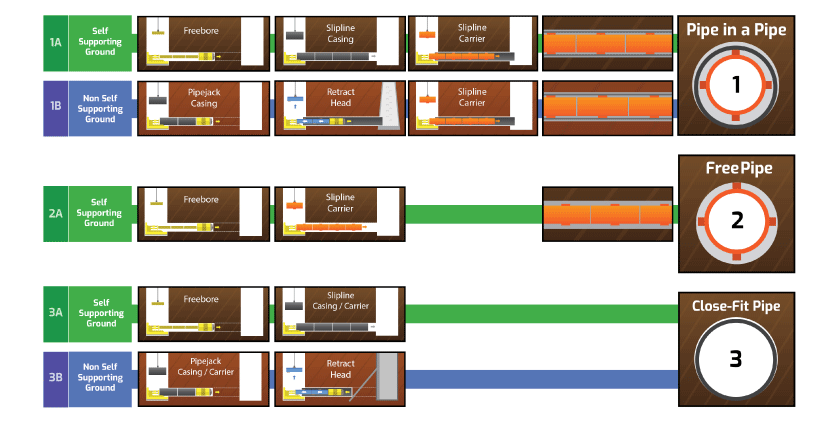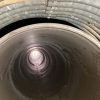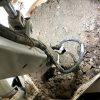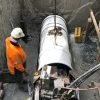PROJECT OVERVIEW.


Primary Risk pipejacking beneath a major highway
The primary risk when microtunnelling beneath a major highway, while using the pipejacking method is the chance of getting the microtunnelling head stuck. However, in this project the ground condition was damp shale which gave Pezzimenti great confidence getting though – Shale being a consistent ground material.
Pezzimenti only add water
The bore had to be undertaken wet to allow the drill mud to come back through the vacuum because of there was a dampness in the shale. This meant all drill mud had to be taken off site and disposed at a registered tip. As Pezzimenti only add water to the drilling process (no chemicals or bentonite), this was not a problem. Usually, this drill mud can be dried out on site and reused there when mixed with dry spoil, however, on this project, there was no room left in the work corridor to allow this.
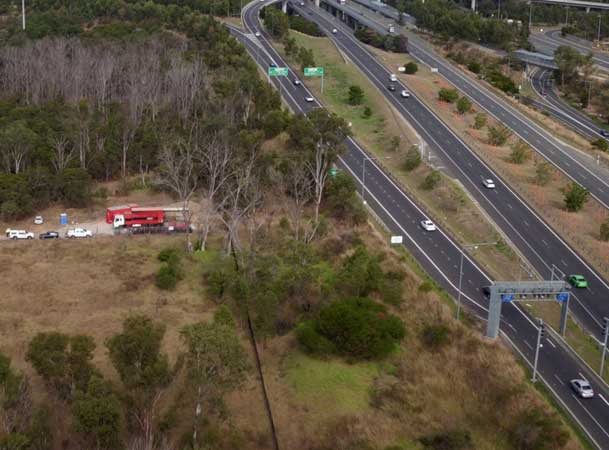
+ Site Setup next to highway
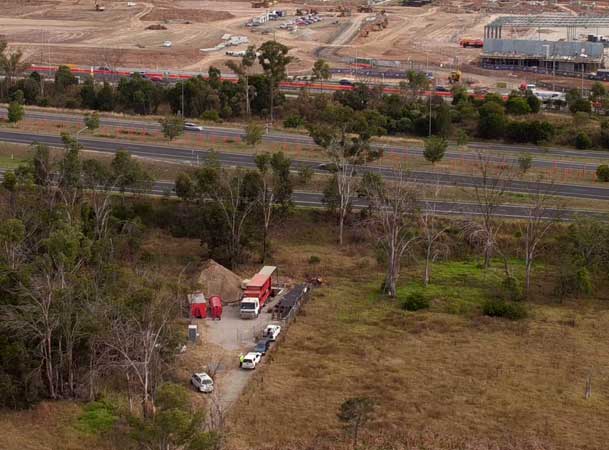
+ The highway and development seen in the background

+ Aerial view of the (left to right) powerpack, spoil bin, gantry truck and pipe stockpile.
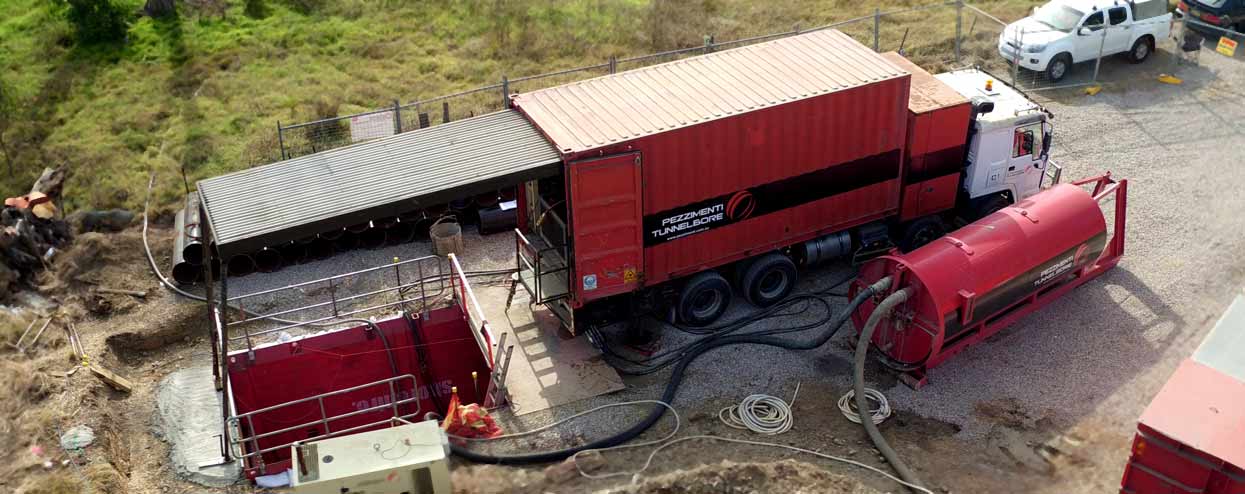
+ The gantry truck cranes pipes and rods into the shaft. Vacuum tubes running out of the shaft to the water bin captured the damp shale for removal.
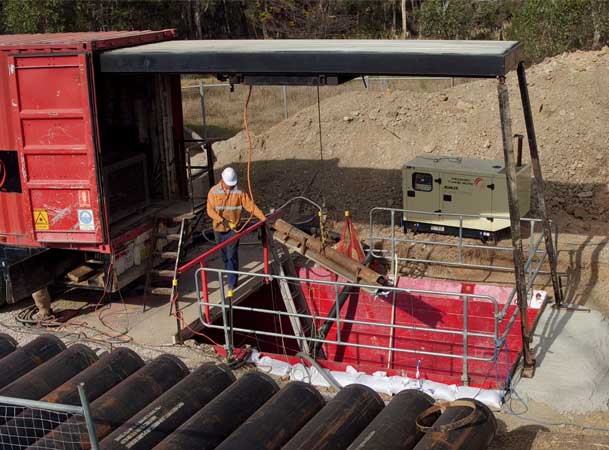
+ Drill Rod is prepped inside the gantry truck
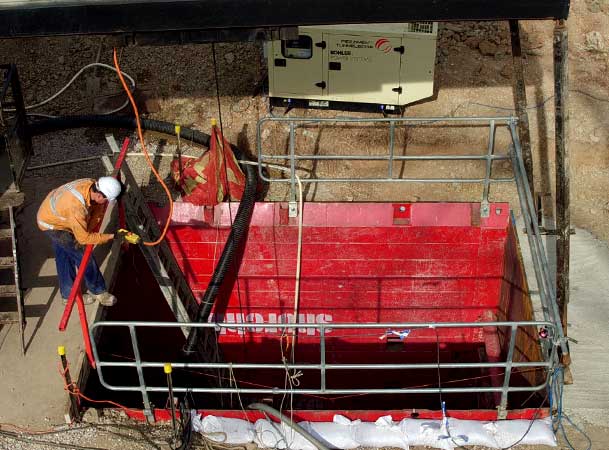
+ Drill rod is lowered into the shaft
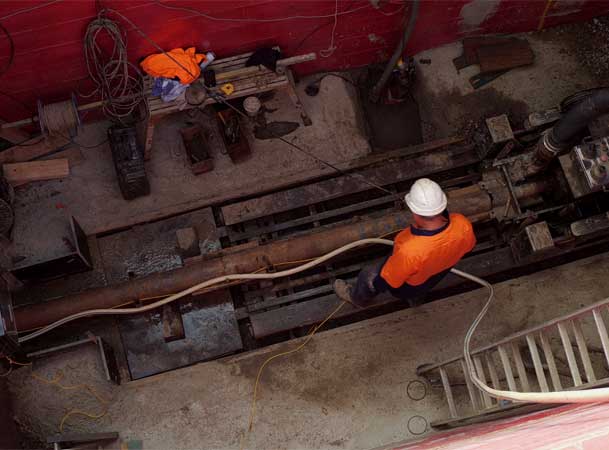
+ Drill rod is loaded onto the jacking frame and Paul the operator lays in the water hose and power cable
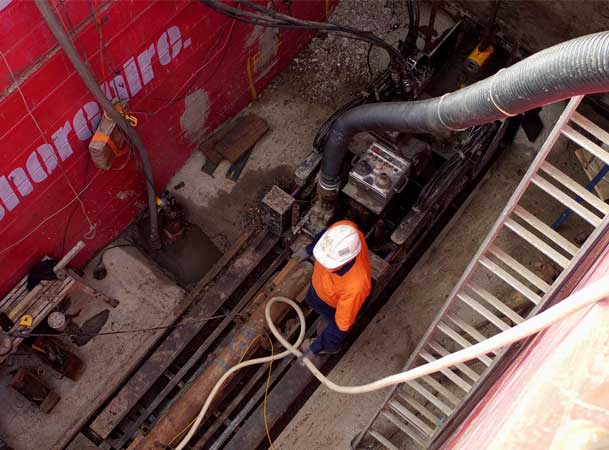
+ The operator controls and the yellow laser can be seen in this image.

+ A full spoil bin is loaded to the hook truck to be transported to the tip. As Pezzimenti Tunnelbore add no chemicals to the bore this was not a problem.
MICROTUNNEL 1.

Pipe in a Pipe by Pipejack Method
Length. 214m
Diameter. 530
Ground. Shale
Casing Pipe. 508 Steel
Carrier Pipe. 300 PP
MICROTUNNEL 2.

Pipe in a Pipe by Pipejack Method
Length. 91m
Diameter. 530
Ground. Shale
Casing Pipe. 508 Steel
Carrier Pipe. 300 PP




